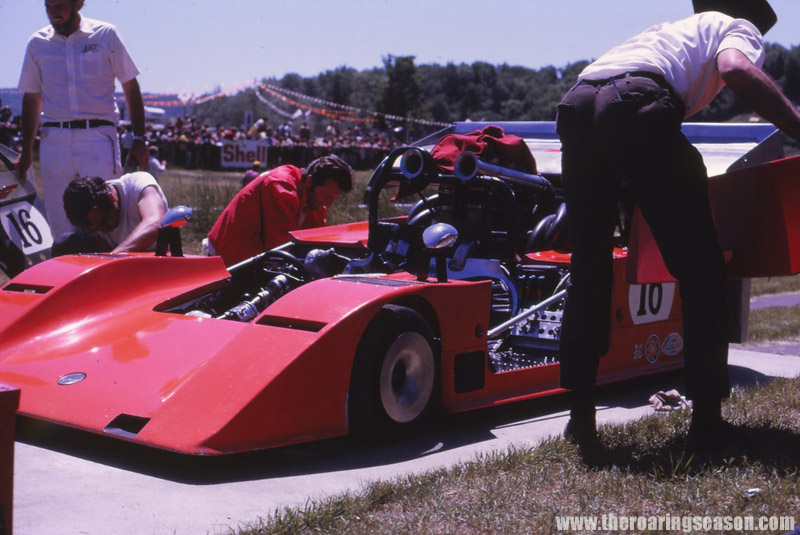-
Administrator


Here it is! The amazing, tiny, AVS (Advanced Vehicle Systems) Shadow MkI, which was built to slice through the air creating minimum air disturbance, and minimum drag. It was built around 10" diameter wheels, and everything was done in small scale, except the big block alloy Chevy. The car was designed by Trevor Harris, and was only achievable because Firestone agreed to produce the tiny tyres, which stood at 17" tall, compared to 24" for a conventional Can-Am tyres.
Note the attachments fitted to the front wheels. These were created as fans, that drew air inside the wheel, to help cool the tiny brakes, which featured 8" diameter rotors. The wheel attachments were actually from a Chev Corvair air cooled engine!
To keep the front body height to the very minimum, the drivers feet had to be splayed out almost horizontally, which meant there was only room for an accelerator and brake pedal. The clutch was operated by a hand lever.
The front suspension included four very small coil springs on each side. Damping was achieved through lever actuated friction discs.
The Shadow was supposed to first appear in 1969, at a time when moving aerodynamic devices were still allowed, and was designed to be fitted with three air brakes; two in the front, and one rising up at the rear.
The Shadow was intended not to have any rear wing, for further drag reduction, but it was soon revealed a wing would be required. Also, the Chevy couldn't get enough cooling. On its race debut at the opening 1970 Can-Am at Mosport, the rear wing featured radiators fitted to its top side, running the full width of the car. This appears to have worked, but the SCCA banned this set-up, so here at St. Jovite, the car appeared with a twin-plane wing, in which radiators were sandwiched between the two wings.
Unfortunately, the concept didn't work. At anywhere close to full speed it bounced and darted alarmingly, the tiny suspension being too stiff and not able to cope with the demands placed upon it. The car only did as well as it did because of its driver, George Follmer, who was impressively brave. But this is what made the Can-Am so great. The opportunity for engineers to come up with such marvelous creations.
It was, however, extremely fast in a straight line, at around 20mph faster than the McLarens.
 Posting Permissions
Posting Permissions
- You may not post new threads
- You may not post replies
- You may not post attachments
- You may not edit your posts
-
Forum Rules






 Reply With Quote
Reply With Quote